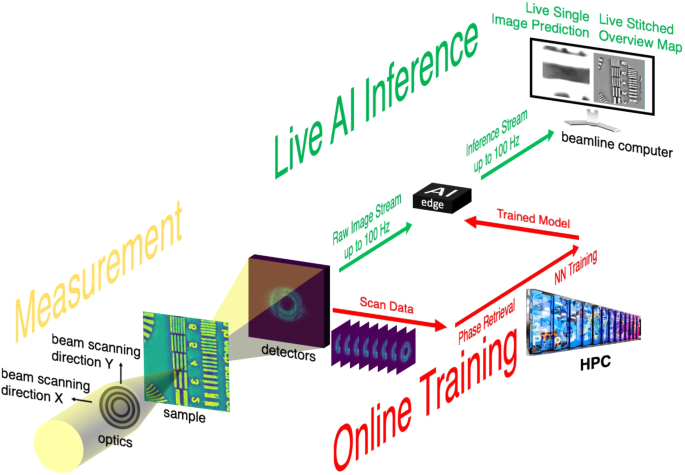2024-04-24 アルゴンヌ国立研究所(ANL)
<関連情報>
- https://www.anl.gov/article/scientists-pioneer-new-xray-microscopy-method-for-data-analysis-on-the-fly
- https://www.nature.com/articles/s41467-023-41496-z
エッジでのディープラーニングがリアルタイム・ストリーミング・プティコグラフィ・イメージングを可能にする Deep learning at the edge enables real-time streaming ptychographic imaging
Anakha V. Babu,Tao Zhou,Saugat Kandel,Tekin Bicer,Zhengchun Liu,William Judge,Daniel J. Ching,Yi Jiang,Sinisa Veseli,Steven Henke,Ryan Chard,Yudong Yao,Ekaterina Sirazitdinova,Geetika Gupta,Martin V. Holt,Ian T. Foster,Antonino Miceli & Mathew J. Cherukara
Nature Communications Published:03 November 2023
DOI:https://doi.org/10.1038/s41467-023-41496-z

Abstract
Coherent imaging techniques provide an unparalleled multi-scale view of materials across scientific and technological fields, from structural materials to quantum devices, from integrated circuits to biological cells. Driven by the construction of brighter sources and high-rate detectors, coherent imaging methods like ptychography are poised to revolutionize nanoscale materials characterization. However, these advancements are accompanied by significant increase in data and compute needs, which precludes real-time imaging, feedback and decision-making capabilities with conventional approaches. Here, we demonstrate a workflow that leverages artificial intelligence at the edge and high-performance computing to enable real-time inversion on X-ray ptychography data streamed directly from a detector at up to 2 kHz. The proposed AI-enabled workflow eliminates the oversampling constraints, allowing low-dose imaging using orders of magnitude less data than required by traditional methods.



